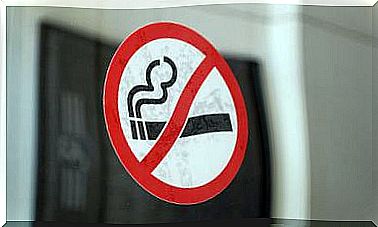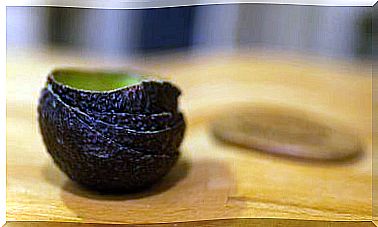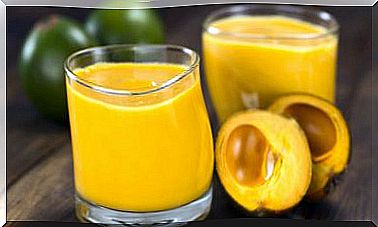Physiology Of The Small Intestine
First, the physiology of the small intestine is based on the functions of the digestive tract, together with those of the attached glands. This organ ranges from the pyloric sphincter of the stomach to the ileocecal sphincter, which separates the small from the large intestine.
The small intestine is approximately 4 to 6 meters long in humans. It also takes care of the digestion and absorption of nutrients. However, to achieve this, it uses proteins that belong to the group of enzymes.
What is the structure of the small intestine?
To begin, the small intestine is divided into: duodenum, jejunum, and ileum. Each of these regions has specific characteristics and functions.
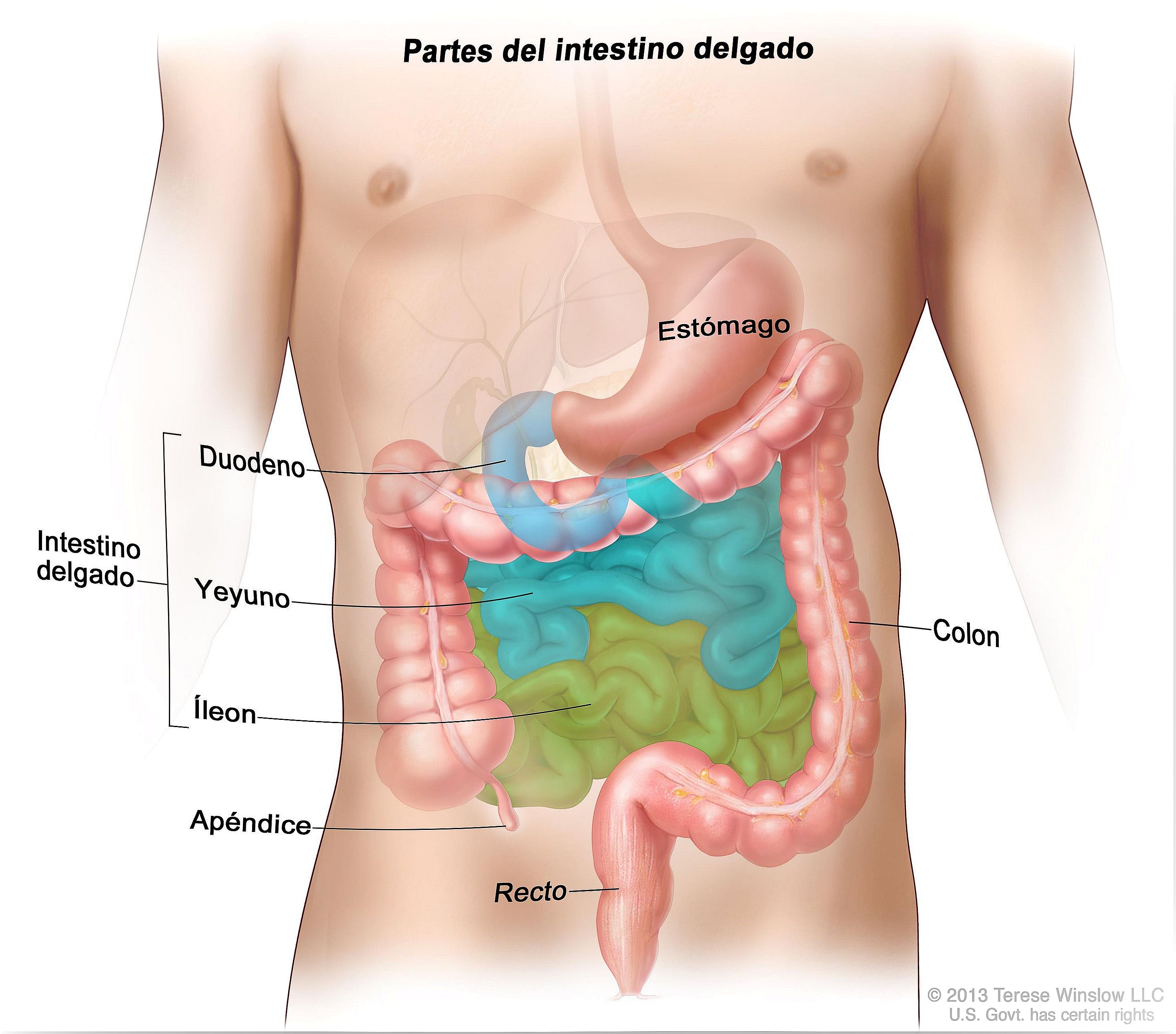
Duodenum
The duodenum is made up of the first 25 to 30 centimeters of the small intestine. E n he mixture gastric contents will occur with bile, pancreatic juice and finally intestinal juices.
Jejunoileal loops
They make up most of the small intestine. It is the area in which most of the absorption of nutrients occurs.
It is considered that the proximal 2/5 of the loops correspond to the jejunum and the distal 3/5 to the ileum, since there is no anatomical structure that delimits both structures.
Wall of the digestive tract
Within the physiology of the small intestine, the wall of the digestive tract is made up of four layers. That is why these layers are going to have a great relevance for the intestinal absorption of nutrients. In conclusion, these layers are the following:
- Mucosa: innermost layer.
- Submucosa : layer below the mucosa.
- Muscular: layer with two types of muscle fibers: circular and longitudinal. They are responsible for intestinal peristalsis.
- Serosa : outermost layer.
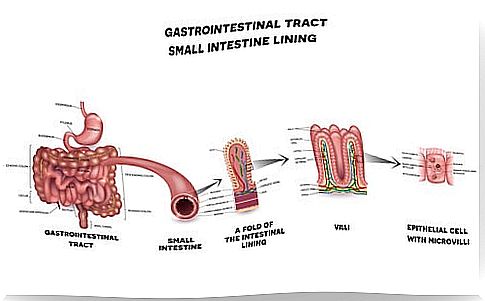
The mucosa of the wall contains a series of structures that increase the intestinal absorption surface by up to 600-900%. These structures are as follows:
- Circular plica : transverse folds in the layers of the duodenum and jejunum that multiply by three the absorption surface.
- Villi : reliefs inside the plica in the shape of a glove finger that multiply the absorption surface by 10.
- Microvilli: evaginations of the cells of the villi that multiply the absorption surface by 30.
Small intestine physiology
Digestion
Digestion is the chemical and mechanical process in which food is transformed into less complex substances. In this way, the subsequent absorption process can be facilitated.
However, the food we eat must be broken down into small molecules so that they can be absorbed. That is, pass from inside the intestine to the blood. For this they must cross the intestinal epithelium or wall of the intestine. For this it is necessary that they be small molecules susceptible to cellular transport mechanisms.
Once in the bloodstream they will be transported throughout the body. The entire digestion process is catalyzed (biochemically accelerated) by proteins called enzymes.
Digestion in the small intestine
In the small intestine the transformation of the chyme of the stomach into chyle will take place. This is achieved by mechanical processes of peristalsis and by the secretion of different enzymes by different organs. We will detail it below:
- Pancreas: pancreatic juice that contains enzymes responsible for breaking down carbohydrates, fats and proteins.
- Liver: bile, contained in the gallbladder that will be the main one in charge of emulsifying fats.
- Small intestine: intestinal juice. It will carry out the digestion of dairy products and refined sugars and will have immune functions against bacteria.
Absorption
In the physiology of the small intestine, absorption is the process by which external substances are absorbed from inside the intestine into the blood. The form of absorption depends on the type of cellular transport used, distinguishing these two types:
- Passive: no energy expenditure.
- Active: with energy expenditure.
For absorption to be possible, food must be broken down to simpler units, that is, nutrients.
Finally add that the absorption of the small intestine is fundamentally of nutrients, while the large intestine is essentially responsible for the absorption of water.
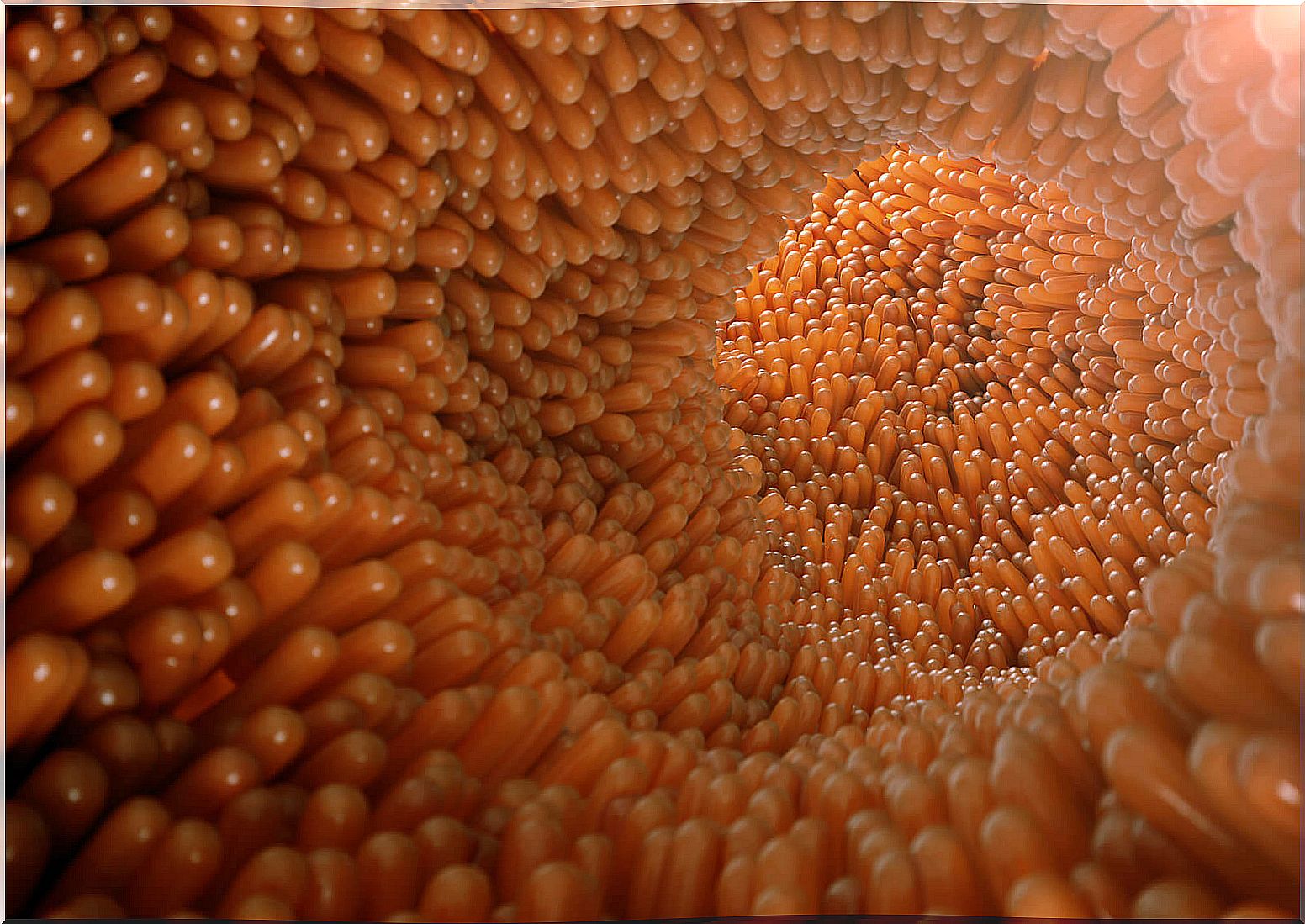
Absorption in the duodenum
- Folic acid.
- Amino acids.
- Fatty acids.
- Vitamin A and vitamin E.
- Carbohydrates: monosaccharides.
- Mineral salts. Calcium, zinc, iron and magnesium.
Jejunum absorption
- Water.
- Amino acids.
- Fatty acids.
- Mineral salts: sodium, potassium and chlorine.
- Carbohydrates: monosaccharides.
Ileum absorption
- Water.
- Vitamins B12 and K.
- Mineral salts. Sodium, potassium and chlorine.
- Bile salts. They are reabsorbed and reused.
Factors influencing absorption
It is possible that food absorption is influenced by various factors, among which we highlight:
- The nutrition.
- Simultaneous intake with drugs.
- The health status of the individual.
- Increased intestinal motility.
Bear in mind that impaired absorption can lead to various intestinal pathologies.
Small Intestine Physiology: Immune Function
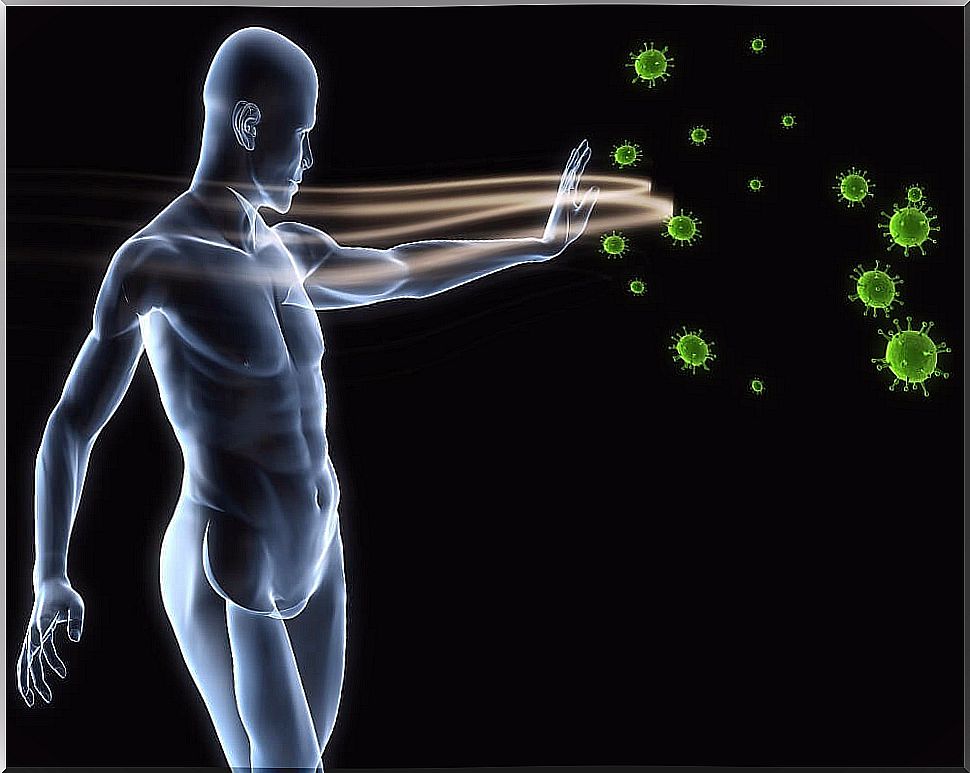
Mechanical barrier
For starters, the intestinal epithelium consists of a layer of cells that acts as a barrier for bacteria, preventing them from reaching the bloodstream. In addition, the epithelial cells of the intestine are covered with a kind of mucus capable of interacting with and trapping bacteria.
Immune system
First, the mucosa-associated lymphoid tissue, MALT, is a structureless grouping of lymphoid cells. They appear in various locations in the body, including the small intestine. MALT cells defend the individual against microorganisms.
Last but not least, MALT forms more complex structures in the small intestine. They are known as Peyer’s patches , which are responsible for the immunity of the digestive tract.


